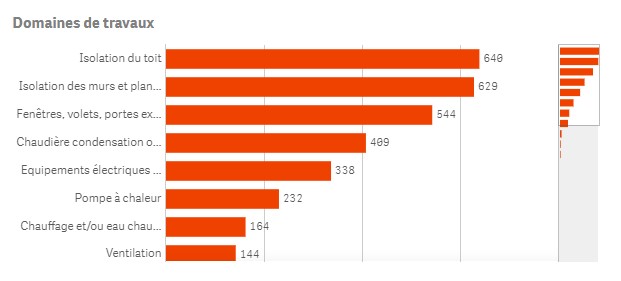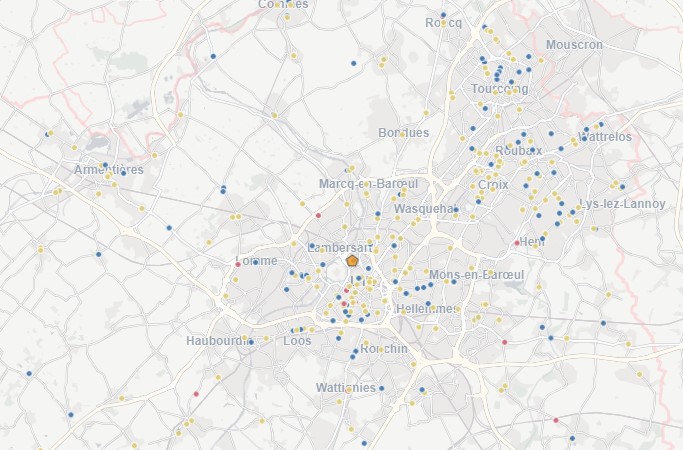As a provider of data marketing solutions, we are often confronted with targeting marketing issues. BtoB marketers and sales people who order target files may be disappointed with the results of their campaigns and attribute a large part of their disappointment to the file. They are not wrong. Targeting has its obvious part in the success of a campaign. Remember that a good campaign is 25% targeting, 25% data quality, 25% message, 25% channel. So, it's best to take your time to target effectively.
Preamble
Traditionally in BtoB, the creation of prospecting files is based on 4 main criteria: the company's sector of activity, its size, its geographical area and the function of the targeted person.
The result of this type of prospecting is often very large and low quality files. Once the campaign is launched, the disappointment can be great, especially because of the often very low transformation rates. Reaching a 10% opening rate is already a good result. Going as far as the signature is often a feat, and this despite a relevant message.
Even if the sirens of "the more I send, the more I will get back, it's mathematical" are tempting, it is often more efficient to take more time in preparing your prospecting targets.
So how do you ensure better results?
Having more information about our targets requires a good database. This database plays a role in the performance of the campaign on two levels. In the targeting obviously to attack a more precise target, but also in the message itself, one not necessarily being linked to the other.
Let's take an example
A construction equipment salesman wants to target small and medium-sized construction companies in Brittany so that they buy from him. He wishes to launch a telephone campaign and a field campaign through his sales representatives.
The result of a traditional targeting (construction, Brittany, companies with less than 20 employees) will give you a target of over 100,000 companies. This means that it will be difficult to make a big difference among the many calls that these companies may receive. In addition, the message may be too general to be effective.
Now let's analyze these 100,000 companies.
Let's try to find micro-segments, targets, among them, that will allow us to better identify them, but also to better talk to them. For example, let's identify their specific fields of work. Beyond the nomenclature of French activities, which is not very precise, let's look for their real activity. Without being specialists, insulation or heating professionals should not need the same equipment. That falls well databases exist for that.
Why not also detect the craftsmen recognized as guarantors of the environment? Those engaged in a real quality approach. This information could have a real added value in the message sent.
Let's now look more specifically at the area where the company is located. Here, geomarketing makes sense. If you want to launch your sales representatives, you might as well target larger companies with an office or administrative headquarters rather than craftsmen who might be on construction sites. Moreover, target the ones closest to your agencies to optimize prospecting costs.
In the end, such an approach will allow us to identify several target segments to which we will have to address a specific message and/or channel.
For example:
- Heating and insulation professionals addressed with a clean email message on the type of material they may need
- RGE certified heating professionals contacted by phone with a script focused on their RGE certification
- Small and medium-sized construction companies that will be visited by the sales representatives directly
- Other construction professionals with a more general message sent by email
- ...
This is only one example of course. Thousands of databases, private or public, exist today and allow to be much more informed. A balance must be found between the time spent collecting data and the construction of the campaign.
The art of finding the data that will make the difference
The analytical method
The example described above would be more of an analytical approach. Cross-referencing data, matching information from several sources, loading it into mapping applications.
The advantage is that the information is controlled from end to end. Targets can be adapted live and tests can be launched on small targets. The disadvantage lies in the number and cost of preparing these campaigns. If you want to target too much, the hourly workload can be heavy, especially for a company without a marketing analyst.
The statistical method
There is then a more automated method. Enter as much information as possible in a statistical model, launch a first campaign and detect among those who responded the statistical element(s) that distinguish them from others. This is what we call a marketing or appetence score. The algorithm will do the work itself to create micro-segments deemed statistically relevant.
Read more
Our data marketing support
Discover Ellisphere's expertise on your data issues to meet your customer knowledge, prospecting and data management challenges.




